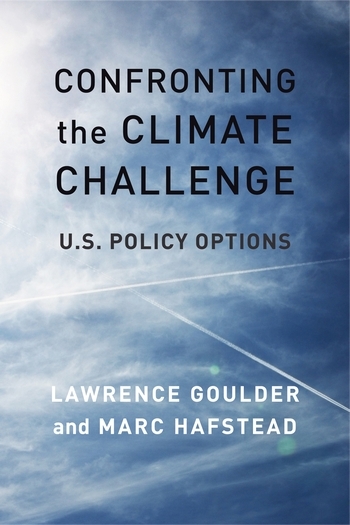A Systems Thinking Approach to Teaching About Climate Change
Cassie Xu and Radhika Iyengar

Climate change is one of the largest threats for humanity and has already had a significant impact globally and locally. It is perhaps the most defining issue of our time. It will ultimately test how communities, cities, and countries around the world can respond to the needs of current and future generations.
We have seen ample evidence that climate change is well underway. While the processes (i.e., rising greenhouse gas emissions, melting ice) are happening globally, the impacts (i.e., flooding, urban heat islands) are being felt locally. Although action is taking place, the scale and solutions have varied across different locations.
This Earth Day, we want to encourage readers to continue to think about the risks posed by climate change and why there is a pressing need for further collective action. While many uncertainties still remain about climate change and its impacts on our futures, not all hope is lost: there is still time.
Climate challenges don’t come in a linear fashion, so we cannot think of climate change as a siloed process, nor can we only study it in the science fields.
One important aspect about climate change we want to emphasize is that it is a systems problem, and in order to take meaningful action we need to address the challenges through systems thinking. Climate challenges don’t come in a linear fashion, so we cannot think of climate change as a siloed process, nor can we only study it in the science fields.
For example, a significant impact of climate change are floods. They have a critical impact on our economy and infrastructure, they affect where people build and live, lead to soil erosion, and have serious implications for public health by affecting groundwater quality. This complicated web of causes and impacts with one environmental episode illustrates the system of intertwined challenges that we must not only understand but counteract. In order to implement innovative solutions to tackle climate change, we have to recognize that it is not simply an environmental problem but also a political, social, and economic challenge that requires cross-disciplinary solutions.
The four pillars of sustainable development—good governance, social outcomes (education and health), the environment, and economic systems—are a good example of systems thinking in action and how potential solutions to complex environmental challenges are a mesh of interwoven strategies that cut across sectors. Simply put, systems thinking can help us recognize that climate change, both its challenges and solutions, are all interconnected pieces that interact with one another.
Simply put, systems thinking can help us recognize that climate change, both its challenges and solutions, are all interconnected pieces that interact with one another.
In our recent primer, Climate Change Education, we put forward the notion that because climate change is in and of itself a systems challenge, we should also be emphasizing the teaching and learning of climate change through systems thinking in educational settings. As an example, the K-12 Next Generation Science Standards has “crosscutting concepts” as a key area of science learning. This is particularly important because systems thinking encourages learners to think about climate change (and other complex societal issues) in a holistic way through the interconnections between the social, economic, and natural worlds, as well as how we as individuals and groups interact with that dynamic system.
The way climate change is currently treated inside classrooms can be very linear. For example, the earth science curriculum looks only at the hard sciences for solutions, but it is only one part of the puzzle. Other pieces of the puzzle include understanding human behavior or psychology, communicating climate change to skeptics, environmental injustice and inequality, and renewable energy, among others. Therefore, to get a deeper understanding of environmental phenomena and to build a more resilient world, multiple disciplines are needed.
Therefore, in our primer, we are encouraging learners and educators of all ages to consider just how climate change can be taught and learned through systems thinking in different ways and across learning environments. We explore how systems thinking applies to climate change and how we can begin to think about the topic of climate change as systems (i.e., how a learner can understand the science of the climate system in an environmental science class and how that learner can then communicate climate change to a climate skeptic in a debate in a political science or civics classroom). We discuss pedagogy and instructional practices that allow learners to develop a systems thinking mindset. This includes iterative practices such as reflection and critical thinking, understanding how things are distinct but connected, identifying credible information, problem-solving collectively, and creating a culture of learning.
We also highlight how systems thinking in education can encourage a lifelong learning mindset, one that explores the factors, relationships, and dynamics of multiple problems and solutions. We discuss the ways in which climate change education can take place in classrooms, in informal programs (museums or nonprofit spaces), or in communities (i.e. with families or religious institutions) and how all these settings provide learners and educators with the opportunity to continue asking questions and making connections about complex challenges.
…to get a deeper understanding of environmental phenomena and to build a more resilient world, multiple disciplines are needed.
The primer brings together case studies that the Columbia Climate School is engaged in—and beyond. Examples highlight that there is no one linear way to teaching climate change through systems thinking and that systems thinking isn’t just limited to educational environments. In addition to examples provided in the primer, we have here outlined two examples of how the Columbia Climate School is using systems thinking in its educational and research settings.
- Curriculum – The Center for Sustainable Development at the Columbia Climate School has been engaged in curriculum work through their Eco Ambassadors program since 2019. This effort aims to present relevant science to learners in and out of the classroom by empowering students to address local environmental challenges through community action. The program begins by introducing students to relevant science training and research on topics such as plastic pollution and trash/composting challenges. Then learners are empowered to take that knowledge and extend the learning to participate in eco-activism in their local communities. This involves students needing to link the science learning about pollution and trash, connecting to larger challenges such as biodiversity, and then advocating for local stakeholders and community members to address existing problems through policy over time. The overall effort here is a great example of systems thinking in action in an educational setting around the topic of climate change. Learners are challenged with aligning what they are learning in the classroom to real-world challenges and developing the skills needed to adapt to the climate challenges they see in their communities.
- Research – The Columbia Climate School has also created Earth Networks, which provide the foundation for cross-disciplinary collaboration to take place at the intersection of climate, sustainability, and the future of planet Earth. These are working groups that bring experts from across and outside of the university to the table in order to broaden the scope of work to address multiple aspects of climate change challenges in a systems fashion. For example, the Environmental Justice and Climate Just Cities Network was rooted in the idea that no community should take on an unfair share of the environmental burden and that environmental benefits should be shared in an equitable way. The network focused on how climate change mitigation and adaptation policies were conceptualized, how they were managed, and who they were implemented and governed by.
Our goal with the primer is to encourage collaborative thinking and educational design changes around how we teach and learn climate change in different educational environments. We do not believe that all future learners need to become scientists in order to be climate change advocates. In fact, quite the opposite. We need people of all ages, particularly future generations, to apply their systems thinking skills and mindsets to the wicked problem of climate change in their classrooms, communities, and future places of work. We hope, by the end of the primer, readers will walk away with a shared sense of what systems thinking is and how to have important conversations about this in an educational setting. We also hope that readers will walk away with the ability to have important conversations about creating educational settings that facilitate the development of a systems thinking mindset. Last, the primer aims to provide readers with pedagogical practices, tools, and resources that can be integrated into various learning environments to create lifelong learning opportunities for all.
Cassie Xu is the former director of K-12 and continuing education at the Columbia Climate School, and Radhika Iyengar is a research scholar and the director of education at the Columbia Climate School’s Center for Sustainable Development. They are the coauthors of Climate Change Education: An Earth Institute Sustainability Primer.




